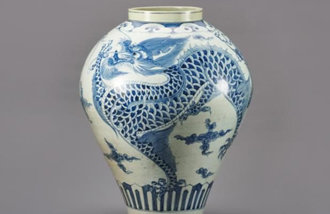Bio Banks Are Scientists Storehouse
From Microbes to Genes and Chemicals
Research Resource Centers, also known as material banks, conserve various materials used for research of microbes, genes and chemical components. For instance, scientists such as Professor Shin, who is seeking to develop a new antibiotic, need germs to test drugs.
The problem is scientist dont know that a developed drug will be effective to what kind of germs.
Korea Institute of Science and Technology (KIST) Medicinal Chemistry Research Center professor Kim Dong-jin explained, One needs to conduct experiments over hundreds or thousands of germ species, but it would be virtually impossible to breed all of them; Research resource centers help scientists conduct experiments by various diverse.
Seoul Womens University Professor Lee Yon-hee who also heads the Culture Collection of Antimicrobial Resistant Microbes commented, On average every month about 10 to 20 researchers visit us to receive microbes from us.
Donating Rare Resources Collected While Conducting Research
In 2003, Pusan National University Nano Science and Technology professor Jeong Sae-young founded the Crystal Bank with his collection of single crystals gathered since his student times.
A single crystal, also known as a monocrystal, is a crystalline solid in which the crystal lattice of the entire sample is continuous and unbroken to the edges. Gems such as sapphires and rubies, and transparent salt grains are all single crystals. They are also used in manufacturing electric products such as watches and semiconductors. Professor Jeong proudly said, Our bank currently keeps approximately 10,000 types of monocrystals.
Annually, the Crystal Bank provides about 2,000 monocrystals to universities, research centers and companies. Depending on the crystal, it charges from tens of thousands of won to one million won. Profits earned from such loans are invested again to develop new single crystals.
Incheon University Biology Professor Lee Tae-soo founded the Culture Collection of Wild Mushroom Species in 2002, with mushroom spores collected over 10 years. The bank currently possesses about 3,000 species of mushroom spores.
Professor Lee expressed proudly, As a bank that specializes in dealing with mushrooms only, we are the largest such bank in the entire world.
The Organism Audio Collection Center keeps about 3,000 audio files capturing the sounds made by animals throughout the country, which was compiled by Gyeongsang National University Veterinary Professor Yeon Sung-chan over a period of 10 years.
Exportation of Resources also Possible
Presently 99 percent of all the research resources kept by Korean resource centers are of Korean origin.
The scientific society estimates that thanks to such centers, Korea is saving annually about five billion won, by not importing research resources.
Recently, some argue that Korean research resources should also fit to international standards in order to deal with foreign resource centers or research centers. Professor Lee said, If research resources are managed and kept in accordance to international standards, then they might also be exported.
sohyung@donga.com







